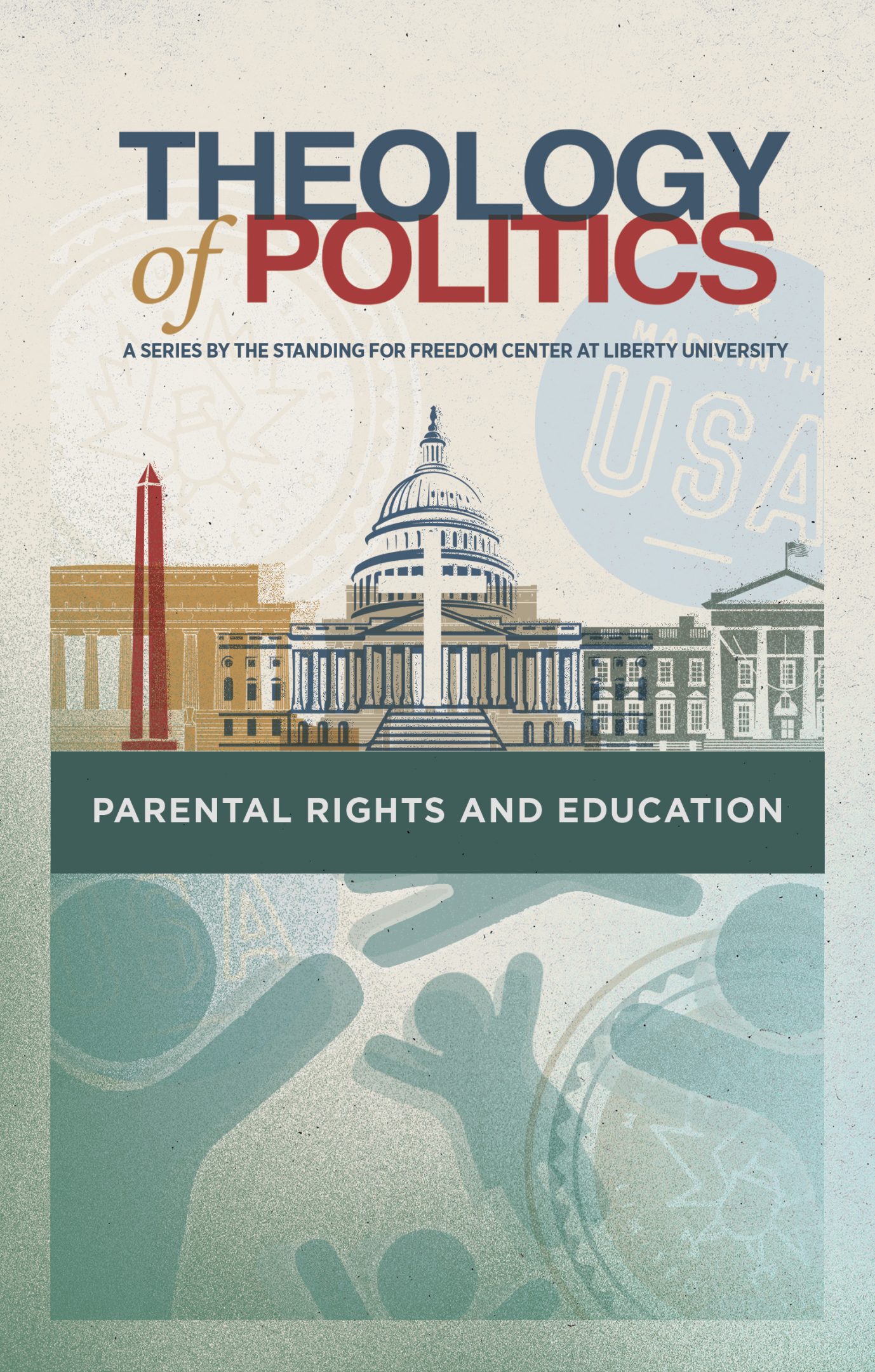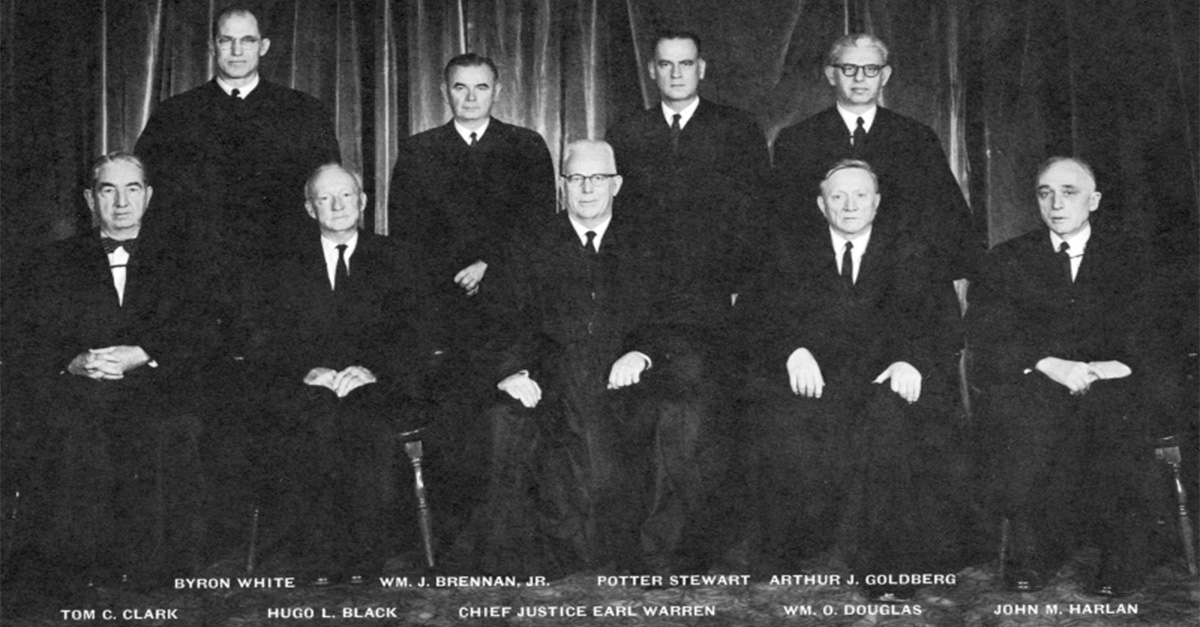


Get a free copy of Parental Rights & Education when you subscribe to our newsletter!

Thanks in large part to the efforts of atheist Madalyn Murray O’Hair, America has been transformed from a country with a long heritage of religious freedom to one that has adopted secular humanism as its established state belief system.
“Congress shall make no law respecting the establishment of religion nor prohibiting the free exercise thereof…”
Today, interpretations, judgments, and prosecutions are clearly not reflective of the Founders’ original intent.
Why is government today trying to force Christian florists and cakemakers to violate their religious convictions and participate in a same-sex marriage in order to be allowed to freely operate their own business? Why did state and local governments restrict religious freedom by closing down churches during COVID while allowing liquor stores, casinos, and abortion clinics to remain open? Why are schools secretly assisting in students’ gender transitions without acknowledging the right of parents to know?
Where did these now mainstream thoughts and actions originate?
Look no further than Madalyn Murray O’Hair, once described by Life Magazine in 1964 as “the most hated woman in America.”
Who was she, and what could she have possibly done to illicit such a groundswell of dislike from Americans?
O’Hair was an atheist who challenged the use of daily prayer and Bible readings in public schools.
What initially was an attempt to restrict her son from having to participate in the morning recitation of “The Lord’s Prayer” at Baltimore’s Woodbourne Junior High School in 1960 soon became a national spectacle and the genesis of a small but powerful “unbelievers” movement.
Within three years, her lawsuit against the Baltimore school, Murray v. Curlett, had worked its way through the appellate courts. The Supreme Court then agreed to consolidate her case with a Pennsylvania case known as School District of Abington Township v. Schempp that challenged the validity of Bible reading as a part of public education.
In a landmark 8-1 decision announced on June 17, 1963, the Supreme Court concluded that for the First Amendment “to withstand the strictures (limitations) of the Establishment Clause, there must be a secular legislative purpose and a primary effect that neither advances nor inhibits religion.”
The Supreme Court later set up a three-pronged litmus test to determine whether the government’s actions violated the Establishment Clause in Lemon v. Kutzman in 1971, known thereafter as the “Lemon Test.”
From that day forward, prayer and Bible reading in public schools were considered unconstitutional unless its use was completely neutral. According to Justice William J. Brennan, who wrote the opinion in Murray’s case,
“The goal of the First Amendment was to have a State without religion, and a Church without politics. The States in this case improperly, and unconstitutionally, favored one religion over others. That is impermissible in our country.”
A minimal amount of research into American history rejects Brennan’s premise. The Founders were clear in that their concerns were with protecting religious Americans from state interference, not the other way around. Unfortunately, the shift from a strict constitutional interpretation to a more fluid conceptualization continues to this day, with few exceptions.
As expected, the public reaction was swift because the SCOTUS decision was so unexpected.
Conservative pastors and most Americans were shocked as they never expected the highest court in the land to overturn nearly two centuries of religious tradition.
By contrast, O’Hair rejoiced in the decision; being vilified and hated was for her a badge of honor. Her success at getting the Supreme Court to see things her way was bad enough, but in her quest she also set the standard for a new form of in-your-face activism that continues to this day.
She sent angry letters to editors and engaged in profanity-laden verbal assaults against everyone who disagreed or sought to argue with her. At the same time, though, she used deception and charm to try to win over larger audiences during a constant barrage of talk show appearances and interviews on national news networks and with national magazines.
Her challenges to Christianity became a lifelong mission to use the Constitution to destroy the fabric that made America an exceptional nation.
She continued to use her skills at inciting intense opposition while building an atheistic following. After the Supreme Court decision, she established the activist group American Atheists in Austin, Texas, in an effort to normalize atheism and call attention to the “privileges” afforded religious Americans by the government.
A couple of voices in Pennsylvania and Maryland had successfully challenged the concept of religious liberties, not just enabling a separation of church and state but a separation of religion from the public square.
Madalyn Murray O’Hair’s legacy of hatred toward the God of Creation and His Word remained consistent. Other groups would also begin to emulate her rants and challenges to basic constitutional principles and religious freedom.
She once stated,
“We are Atheists. As such, we are foes of any and all religions. We want the Bible out of school because we do not accept it as being either holy or an accurate historical document. We want the Lord’s prayer out of school because we doubt the historicity of Jesus Christ and also we do not believe in the efficacy of prayer.”
Madalyn Murray O’Hair, her son, and her granddaughter would ultimately meet a gruesome and untimely death, not at the hands of “evil” God followers but by fellow atheists. Gary Karr and two other men kidnapped them in 1995. Their mutilated bodies were found and forensically identified five years later, the victims of an extortion, robbery, and murder plot by those wanting Murray’s gold coins, which were believed to be worth $600,000. Karr was initially sentenced to two life terms, but in 2021 was re-sentenced to 50 years in prison.

Unfortunately, thanks to O’Hair’s lawsuit, the lid of Pandora’s box had been pried open and follow-on decisions would further crush religious expression in the public square and overshadow any commonsense morality. With each passing year, SCOTUS continued to limit areas and scenarios that protect religious liberties, and their decisions served to slowly shift the standard for religious expression from that of “neutrality” to outright hostility.
Among those rulings were the following:
The majority of the damage to religious liberty was accomplished before 2010, but over the last few years, the Supreme Court and a series of decisions have helped to slowly swing the pendulum back in the direction of neutrality.
Its unanimous decision in Fulton v. City of Philadelphia, for example, found that the government cannot force Catholic Social Services to place children with same-sex couples in violation of its sincerely held religious beliefs.
In a 6-3 decision, the Court ruled in Kennedy v. Bremerton that public employees like football coach Joe Kennedy have a First Amendment right to personal religious expression, such as kneeling and praying silently, without fear of reprisal.
In Carson v. Makin, the Court ruled that Maine must allow parents to use state tuition vouchers at private religious schools if the state also allows parents to use public money to send their children to secular private schools.
And during the COVID era, the Supreme Court repeatedly and forcefully ruled that state and localities cannot have one set of rules for churches and Christians and another, more permissive set of rules for secular establishments and secular Americans.
This trend in rulings in favor of religious liberty isn’t likely to take America back to the era before Madalyn Murray O’Hair launched her war against religious belief, but the pendulum, for the moment, is at least swinging back in a more positive direction.
Whether that momentum will continue over the long term is still very much in the air. The secular left has made great strides in convincing Americans and activist leftist judges that secular humanism is the only acceptable “belief” allowed in the public square (or really anywhere beyond church walls) and that anyone who disagrees needs to either silence themselves or be silenced.
Christians must stand against this anti-American onslaught by standing firm in their right to believe and act according to their biblical beliefs and boldly speaking the truth, even if it costs them financially or socially. Moreover, they must always vote for candidates and measures that advance religious liberty rather than curtail it.
Americans in Madalyn Murray O’Hair’s day took for granted that America’s heritage of religious freedom would never be threatened, but we know differently today. As such, we should rejoice that we still have the right to openly worship our Lord and Savior and share our beliefs with others — for there may yet come a day when we will find ourselves not just criticized and harassed for those beliefs but openly persecuted.
If you like this article and other content that helps you apply a biblical worldview to today’s politics and culture, consider making a donation here.
Notifications